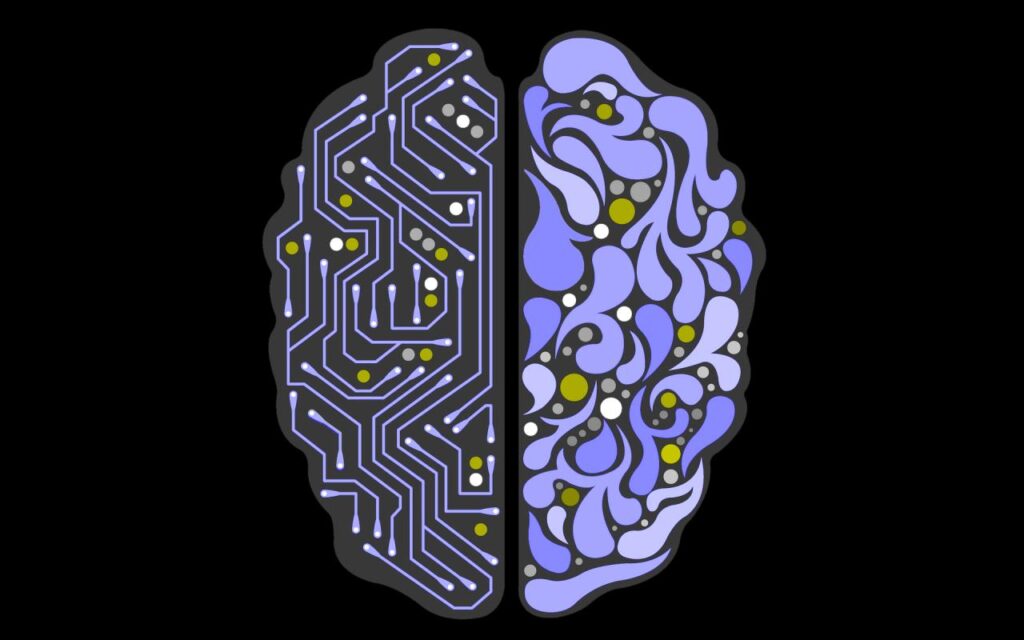The rapid ascent of Artificial Intelligence (AI) and automated decision-making systems represents the single most significant technological shift since the dawn of the internet. AI, once a niche academic field, now dictates fundamental aspects of daily life: from financial credit scores and job applications to medical diagnoses and the content we consume. This profound integration mandates an urgent, critical focus on AI Ethics and the broader discipline of Tech Ethics. The core challenge is simple yet existential: ensuring that increasingly autonomous and powerful technology aligns with fundamental human values, upholds justice, and preserves democratic integrity. AI Ethics: Governing the Algorithmic Future is a topic that resonates deeply within high-value, high-CPC (Cost Per Click) sectors—including legal, finance, governance, and enterprise technology—making authoritative content here essential for maximizing digital revenue.
The debate has moved past theoretical discussions and into the boardroom and legislative chambers. Algorithmic bias, data privacy breaches, and the rise of synthetic media (deepfakes) are no longer hypothetical risks; they are daily realities that erode public trust and trigger massive regulatory penalties. Companies that treat ethical compliance as a mere afterthought face devastating consequences, including brand destruction and exclusion from global markets. Conversely, organizations that integrate Responsible AI (RAI) frameworks into their core strategy gain a decisive competitive advantage, securing investor confidence (ESG scores) and attracting premium talent. This comprehensive exploration delves into the foundational ethical crises, the necessary governance structures, the business imperative for responsible development, and the future challenges of human-AI coexistence.
A. The Foundational Crisis: Bias and Discrimination
The most immediate and pervasive ethical challenge in AI is the inherent problem of bias, where systems learn and amplify historical human prejudices embedded within their training data.
- Data Bias is Systemic: AI models are trained on real-world data, which reflects centuries of systemic bias against marginalized groups (e.g., historical loan rejection rates, discriminatory hiring patterns, or unequal policing data). When the AI learns from this data, it replicates, and often amplifies, the unfair outcomes. A. Algorithmic Redlining: AI systems used for credit scoring, mortgage lending, or insurance risk assessment can subtly disadvantage racial or socio-economic groups by identifying proxy variables (like zip codes or shopping habits) that correlate with protected characteristics, leading to discriminatory financial exclusion. B. Gender and Racial Skew in Computer Vision: Early facial recognition and computer vision systems often performed significantly worse on individuals with darker skin tones or on women, due to imbalanced training datasets. Deployment of such flawed systems in security or law enforcement settings carries life-altering consequences.
- The Challenge of Fairness Definition: Defining “fairness” in a statistical sense is mathematically complex and often involves trade-offs. C. Equality of Opportunity vs. Equality of Outcome: Should an AI system aim for “equal opportunity” (the system is non-discriminatory based on input) or “equal outcome” (the output distribution matches demographic percentages)? Ethical governance requires clear, context-specific definition of the fairness metric before deployment.
- Mitigating Bias Through RAI Frameworks: Ethical practice requires active, pre-emptive intervention. D. Dataset Auditing: Rigorous auditing and cleaning of training data to identify and remove biased labels or severely underrepresented samples before the model is trained. E. Post-Processing Calibration: Employing statistical techniques after training to calibrate the model’s output, ensuring that decision thresholds do not unfairly disadvantage specific demographic groups, promoting what is often called equity-aware AI.
B. The Principle of Transparency and Explainability (XAI)
In critical applications, AI systems cannot be allowed to operate as “black boxes.” The right to understand how a decision was made is paramount, leading to the necessity of Explainable AI (XAI).
- The Problem of Opacity: Modern deep learning models are incredibly complex, often involving billions of parameters that interact in ways that even their creators cannot fully trace. This opacity makes accountability impossible. A. The Right to Explanation: As codified under certain regulations (like the GDPR), individuals have a right to meaningful information about the logic involved in automated decision-making processes, especially if the decision significantly affects them (e.g., termination of services, loss of employment). B. Trust and Adoption: Lack of explainability breeds distrust. If users, doctors, or judges cannot understand the reasoning behind an AI’s output, they are far less likely to trust or adopt the technology, regardless of its statistical accuracy.
-
Techniques for Explainability: The field of XAI is developing tools to reverse-engineer and simplify complex model logic. C. Model-Agnostic Tools: Techniques like LIME (Local Interpretable Model-agnostic Explanations) and SHAP (SHapley Additive exPlanations) analyze the model’s inputs and outputs to estimate the relative importance of different features in making a specific prediction. D. Simpler Models and Proxy Logic: In high-risk domains, ethical guidelines often mandate the use of simpler, intrinsically interpretable models (like decision trees) or require AI to produce a human-readable “explanation” or justification that accompanies the output.

C. Privacy, Data Integrity, and Security
The foundation of modern AI is massive data collection. Ethical guidelines must rigorously protect individual privacy while still enabling necessary innovation.
- Privacy-Enhancing Technologies (PETs): The goal is to maximize data utility for training while minimizing privacy risk. A. Differential Privacy: Adding controlled, quantifiable “noise” to datasets so that researchers can analyze collective patterns without being able to identify or trace any single individual record, offering a mathematical guarantee of privacy. B. Federated Learning: A technique where the AI model is sent to individual devices (e.g., smartphones) to be trained locally on private data, and only the aggregated model updates (the learned weights) are sent back to the central server. The raw data never leaves the device.
- Data Minimization and Purpose Limitation: Adhering to the principle that data should only be collected for the specific purpose stated and retained only for the duration strictly necessary to fulfill that purpose. Excessive data collection is an ethical liability.
- Security and Adversarial Attacks: Ethical AI must also be robust and safe, preventing malicious actors from deliberately corrupting the system. C. Adversarial Examples: Protecting models against subtle, often invisible modifications to input data (e.g., adding imperceptible noise to an image) that fool the AI into making a catastrophic misclassification (e.g., confusing a pedestrian for road noise). D. Data Poisoning: Guarding the training data pipeline from deliberate introduction of false or malicious data, which could be used to embed a backdoor or hidden bias into the final AI model.
D. The Governance and Accountability Framework
Ethical principles are meaningless without organizational structures and legal frameworks to enforce them. AI Governance translates philosophy into actionable policy.
- The Role of the Chief AI Ethics Officer (CAIEO): A high-level executive role responsible for overseeing the development, audit, and deployment of all AI systems to ensure they align with the company’s ethical guidelines and external regulations.
- AI Ethics Boards and Review Committees: Establishing multidisciplinary groups (comprising legal, HR, engineering, and ethical experts) to perform mandatory gate reviews for high-risk AI projects. A. Mandatory Impact Assessments: Requiring comprehensive AI Ethics Impact Assessments (similar to environmental impact statements) before a system is deployed, evaluating potential societal harm, bias risk, and privacy implications.
- Legal and Regulatory Compliance (High-CPC Focus): B. The EU AI Act: This legislation categorizes AI systems by risk level and imposes strict compliance requirements on developers and deployers of “High-Risk AI” (e.g., those used in law enforcement, credit, or critical infrastructure), creating a global standard for responsible practice. C. Transparency in Synthetic Media: Establishing a legal and ethical requirement for companies to clearly label all AI-generated content (e.g., deepfakes, text, voice) to mitigate the societal threat of misinformation and fraud. D. Liability and Accountability: Defining clear chains of human responsibility when an autonomous or AI-driven system causes harm. Accountability should rest with the human or organization that designed, trained, or deployed the system, not the algorithm itself.

E. The Future Challenges: Autonomy and Human Agency
As AI evolves toward greater autonomy, the ethical debate shifts to metaphysical questions about human-machine relationships and the preservation of human control.
- Preserving Meaningful Human Control (MHC): In systems involving life-or-death decisions (e.g., autonomous weapons or complex medical machinery), ethical guidelines must ensure that humans retain the final, decisive authority and are not merely “rubber-stamping” AI recommendations.
- The Existential Risk of Superintelligence: While theoretical, ethical foresight requires serious consideration of existential risks (X-Risk) posed by the potential creation of an Artificial General Intelligence (AGI) that surpasses human intellect. Responsible development must include rigorous safeguards against unintended, catastrophic consequences.
- Societal Value Alignment: Ensuring that AI’s goals are fundamentally aligned with human flourishing and broad societal welfare, rather than narrow commercial or political interests. This involves continuous public deliberation and democratic input into the direction of AI research.
- Addressing the Digital Divide: Recognizing that access to powerful AI tools and the benefits they confer is not equally distributed. Ethical development must include provisions for providing AI-driven benefits (e.g., personalized education, healthcare) to marginalized communities to prevent the technology from exacerbating global inequalities.
Conclusion
In conclusion, Tech Ethics is the necessary survival manual for the AI Age. It is the foundation upon which trust, legitimacy, and long-term business sustainability are built. By prioritizing Fairness, Transparency, and Accountability over speed and short-term profits, organizations can mitigate catastrophic risks, comply with evolving global regulations, and secure the competitive advantage derived from operating with integrity. The choice is clear: either we govern the algorithms we create, or we submit to the biases and unintended consequences they impose.







